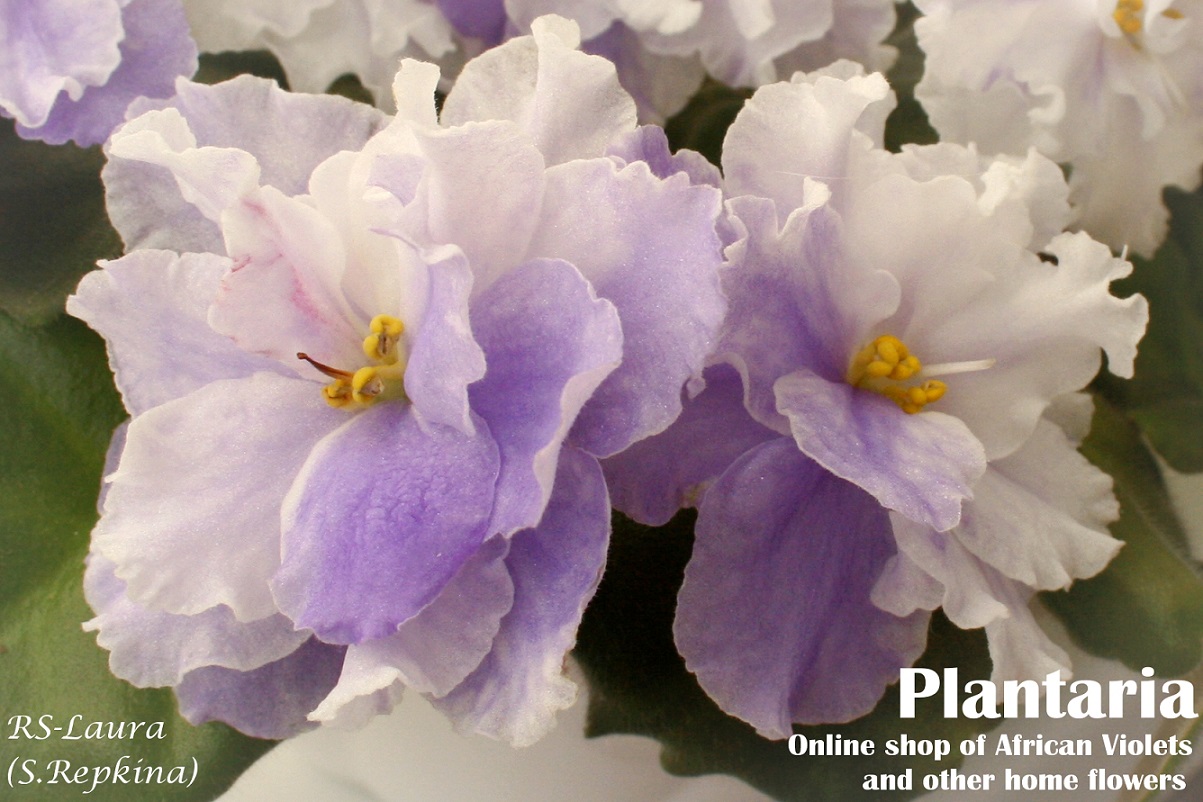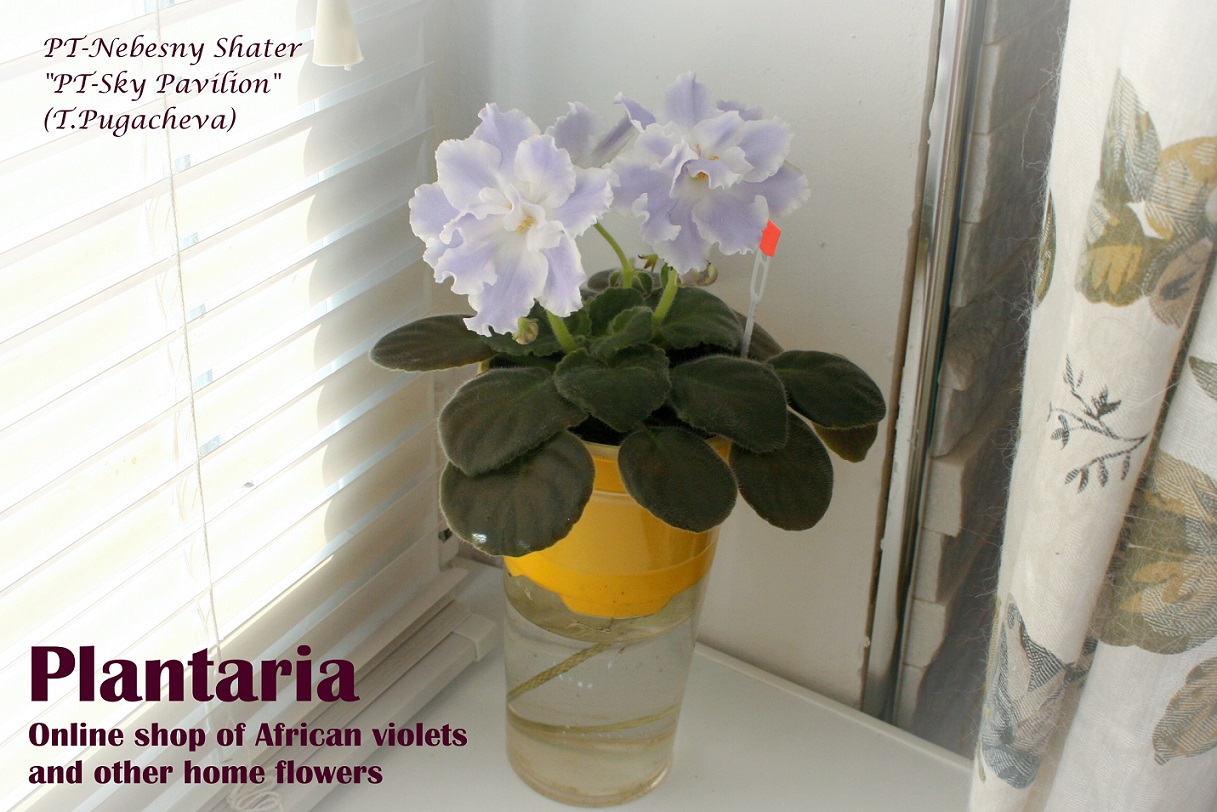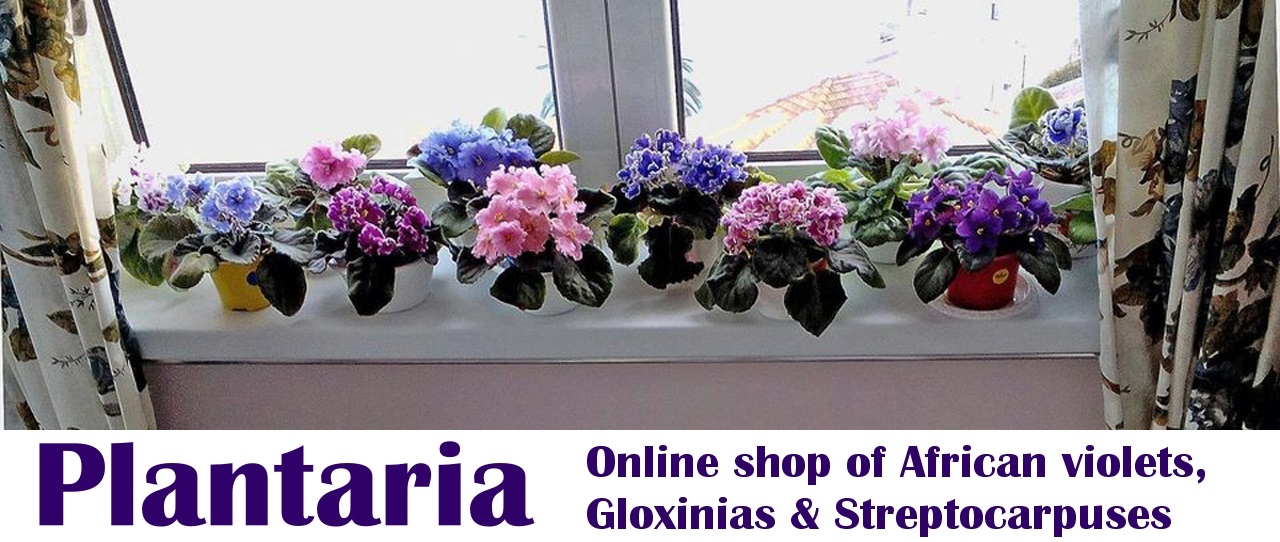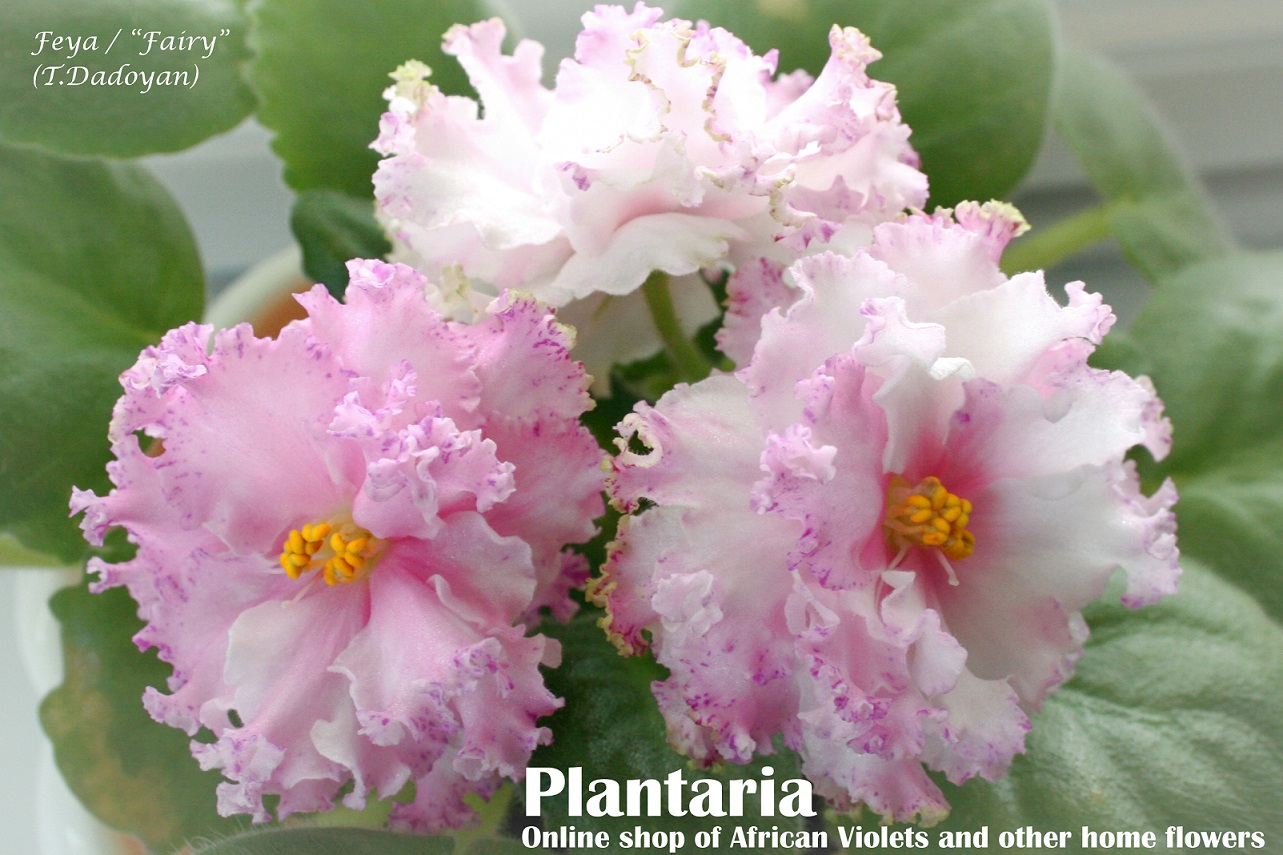
PLACE:
The plants need to be located in a light place without direct sun and without air flows (for example, from open window or air conditioner). Best temperature for African violets is 18°C-26°C (64°F-78°F). In temperatures above 28°C (82°F) or under 15°C (60°F) fungal and/or bacterial diseases can appear on African violets and entail their loss very quickly.
WATERING:
Water the plants regularly when a top layer of a substrate becomes dry, to keep the medium in a pot always slightly moist, but not too wet. Avoid over-watering and excessive drying of a substrate. Water should be soft (boiled or filtered) and slightly warmish – about 2-3°C warmer than room temperature. Add water under the leaves in small quantities evenly at several points around the pot for equal moistening of substrate. Don’t pour water on leaves and flowers.
Another way of watering is to add slightly warmish water to a tray under a pot with African violet. Wait for 15-30 minutes to let the soil in the pot to absorb the necessary amount of water. Pour out the rest of water from a tray – don’t leave the plant staying in water for long time as it can entail root rot.
Wick watering: In our opinion it’s the most comfortable way of growing African violets. Water is transferred to soil in a pot through a nylon wick due to difference in capillary pressures. It constantly provides a plant with as much water as it exactly requires. Thus wick watering prevents a plant from being over-dried or over-watered. This is very important, because most cases of plants loss are caused by mistakes in watering regimen.

All our plants have nylon wicks. To make the system work, just water a plant traditionally, so that the soil becomes moist and the wick becomes all wet. Then install a pot with a plant on a bigger container filled with water. Please note, that there always should remain at least 1cm (0,5 inch) of free space (without water) between the bottom of a pot and surface of water.
Sometimes wicks may suddenly dry out and stop working (transferring water). In this case just repeat all steps for starting a wick as described above. Check your plants regularly to be sure that wicks are working. For those clients who prefer traditional watering, we recommend to use wicks during the periods of their long absence at home.
FERTILIZING:
Once a month use any complex fertilizerfor home flowering plants in 3 times lower concentration than it’s recommended in instruction.
POTTING:
Don’t use too big pots for violets. Diameter of a pot should be 3 times smaller than diameter of a violet. Small plastic pots with many drainage holes in the bottom are the best choice for growing violets. Soil mix should contain about 60-70% of peat and 30-40% of perlite. Peat-based substrates for home plants also can be used (60-70% of substrate and 30-40% of perlite). Please be aware that substrates for azaleas, camellias, hydrangeas and rhododendrons have too strong acidic reaction and should not be used for African violets. Don’t use peat or soil from the street (gardens, parks, forests, etc) because thus you can bring pests and infections to your home plants.
Wishing you very happy growing!



